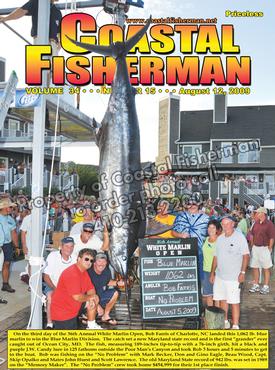


Article by Pat Schrawder
 One item of electronics that seems to have decreased in popularity for many boaters is the single sideband. That doesn’t really make a lot of sense because there is nothing else like single sideband to give you such reliable long-range communications. With more and more boats going off-shore and smaller boats being more vulnerable, you would think that SSB would be enjoying increased use.
One item of electronics that seems to have decreased in popularity for many boaters is the single sideband. That doesn’t really make a lot of sense because there is nothing else like single sideband to give you such reliable long-range communications. With more and more boats going off-shore and smaller boats being more vulnerable, you would think that SSB would be enjoying increased use.
Like many items of marine electronics, the single sideband radio was first developed and used by the military, but it was authorized for civilian use in 1971. Like VHF, the SSB has many channels to select from but, unlike VHF, it also has several frequency bands, each with several channels. The purpose of these varying frequency bands is to take advantage of atmospherics to send signals a further distance.
When you transmit on any channel on your SSB, one part of the signal, called the “ground wave”, stays close to the surface and reaches targets anywhere from 100-200 miles. The other portion of the signal, known as the “sky wave”, bounces off layers of the ionosphere and reflects back to earth at distances of 3,000 miles or more. The range you get with your set depends on the time of day, the season and the frequency you are using. In general, lower frequencies travel less distance than higher ones and all signals travel further during daytime than at night.
The primary advantages of SSB are its greater range, wide selection of channels, higher power output (100-200 watts), and less crowding of channels making it easier to get through. The primary disadvantages are the larger physical size and current requirements. SSB requires additional grounding to work properly and must utilize an antenna at least 17 feet tall or greater for good performance. They are also more expensive than VHF even though their prices have come down in recent years. Unless you are transporting more than six passengers for hire, most VHF radios do not require an FCC license but all SSB radios are required to have one.
If you already have SSB on your vessel, here are a few pointers on its most effective use. Do not attempt to transmit on your radio until it has warmed up for at least three minutes or so. Speak clearly and loudly across the microphone instead of directly into it and hold the microphone close to your mouth. The antenna of your SSB radiates RF energy. Remember not to touch or hold the antenna during transmission. SSB’s high output power could result in a mild burn to your hand.
In recent years the use of global satellite telephones has increased and improved, which may account for some of the decreased use of SSB. However, so-called “sat phones” entail an ongoing subscription fee and do not have some of the features of SSB such as up-to-date weather broadcasts. SSB radios can talk to each other without any charge and can make marine operator assisted calls to land-lines at minimal expense. However, there are fewer public coast stations available for SSB marine operator calls than in the past. On the plus side, SSB can now be used to send and receive e-mails if you have the proper software, modem and on-board computer, preferably a laptop.
There have not been many changes in SSB technology over recent years but it is unlikely that SSB will be discontinued altogether. If you have a larger vessel and you travel offshore to the canyons, you might want to look into getting a SSB. It’s the most reliable way for you to have communications at your fingertips.
Pat Schrawder and her husband Larry are owners of L&L Marine Electronics on Golf Course Road in West Ocean City.